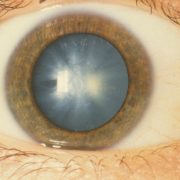A question of Perspective: how do your eyes process colours?
An interesting exchange with a client recently made me think about the impact that colour vision deficiency can have and how it might influence your life if you’re affected.
Our client was explaining how his colour vision issue was not detected until he was studying Chemistry at University. More specifically he recalled how he found it difficult to judge the end point of a titration colour change and often his test tube or flask would be overflowing.
But I couldn’t help feel that if his alternative colour vision had been picked up sooner he would have been much more prepared.
What you need to know about colour blindness
The term ‘colour blind’ is often used to describe a colour vision issue, but very few people are completely colour blind (i.e. only see black, white and grey).
Most people with a colour vision deficiency see in colour but have difficulty distinguishing between certain shades of colours. They can see a rainbow but it will look different to them.
We are able to see in colour because the photoreceptor (cones) in our retina contain light sensitive pigments which enable us to recognise colours. Each cone contains a pigment which is sensitive to either red, green or blue light. When activated by light entering our eye, the cones send a signal through the optic nerve to the brain.
This allows us to see our world in countless colours. If one type of light sensitive pigment is missing then we will have a reduced ability to distinguish particular colours.
Colour deficiencies and screenings
This colour spectrum shows what colours look like for different types of colour vision deficiencies.
Inherited colour vision defect can be detected with a colour vision screening test which should be done as standard as part of a child’s first eye examination so that it is detected early.
If educators are aware, early years learning which is heavily colour coded can be adapted to avoid confusion.
Who’s most likely to get colour vision defects
Because of how colour vision defects are inherited, males are much more likely to be affected than females. It affects one out of 12 males and only one in 200 females. So, any girls with colour vision defect are pretty special.
While a career as a pilot, electrical engineer, fire-fighter or policeman might be out of the question there are plenty of examples how an alternate colour vision doesn’t have to hold you back.
I was surprised to discover that Emerson Moser, a senior crayon moulder for Crayola revealed after he retired that he had a colour vision defect. By then he had moulded over 1.4 billion crayons!










